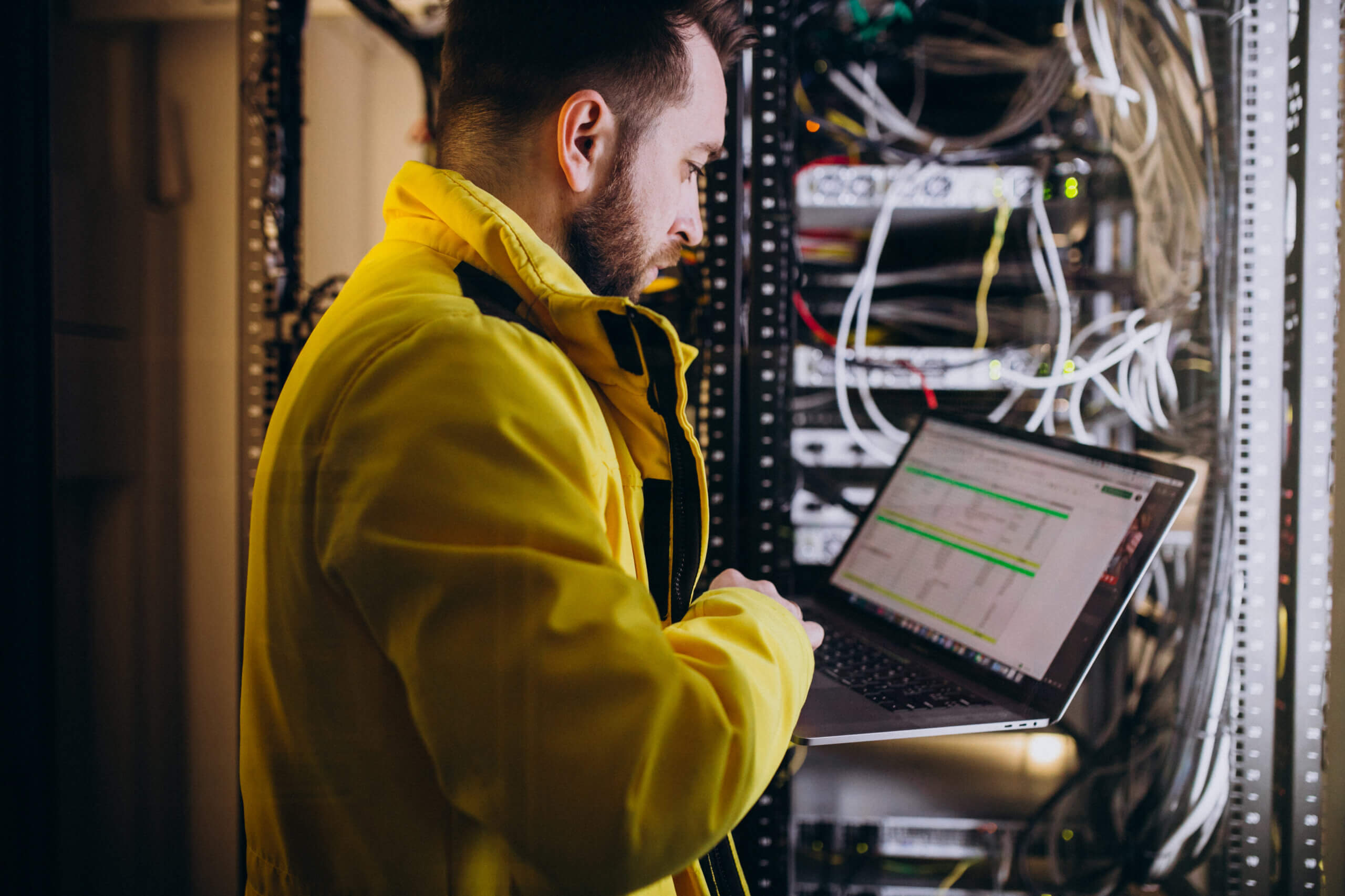
Securing the Grid: How Utilities Can Strengthen Cybersecurity Amid Rising Threats
The utility sector is facing an unprecedented wave of cyberattacks. In 2024 alone, ransomware attacks targeting energy and utility companies surged by 80%. The average cost of a successful attack in this industry has climbed to a staggering $2.5 million. These incidents aren’t just costly. They also threaten to disrupt power grids, water supplies, and other critical infrastructure that millions rely on. Notably, 84% of these attacks are initiated via phishing emails, and 96% of attackers leverage compromised remote access services to move laterally through networks. Such statistics highlight a harsh reality: utility companies have become prime targets, and traditional defenses are struggling to keep pace.
Why are utilities so attractive to threat actors? For one, utilities oversee essential infrastructure and a successful attack can yield outsized impact and ransom payouts. But the problem isn’t just external threats; many utilities have inherent vulnerabilities that make attacks more likely to succeed. Below, we examine key factors contributing to utility cyberattacks and how organizations can respond.
Why Utility Cyberattacks are More Prevalent
Utility organizations (power, water, gas, etc.) face unique challenges that heighten their cyber risk. Understanding these vulnerabilities is the first step toward shoring up defenses:
Outdated Legacy Systems
Many utilities still run on decades-old operational technology (SCADA/ICS) and unsupported software. Aging infrastructure and legacy systems often can’t be easily patched or monitored, leaving glaring security holes. In many cases, most utility OT environments haven’t seen major upgrades in decades and remain open to exploitation. These antiquated systems weren’t designed with cybersecurity in mind, making them soft targets for modern hackers.
IT/OT Network Convergence
The once-isolated operational networks of utilities are increasingly connected to IT networks and the internet for efficiency and remote management. This convergence of OT and IT expands the attack surface dramatically. The interconnected nature of control systems (SCADA, IoT sensors, remote access points, etc.) provides multiple entry points for attackers. Every new digital link, whether it’s a smart sensor or a remote maintenance connection, can introduce vulnerabilities. Alarmingly, NERC has warned that U.S. power grids are gaining about 60 new potential security vulnerabilities per day as networks expand.
Regulatory Compliance Challenges
Utilities operate under strict regulations like NERC CIP (Critical Infrastructure Protection) standards for the electric grid. Ensuring continuous compliance with dozens of complex requirements is an ongoing battle. Documentation, audit preparedness, and alignment with evolving guidelines consume significant resources. Non-compliance isn’t an option as violations can incur hefty fines and increase breach risk. Yet many utilities struggle to keep up with the administrative burden of these mandates. The need to meet regulations can ironically pull focus and funding away from proactive security improvements.
Limited Cybersecurity Resources
Despite being high-value targets, utilities are often chronically underfunded in cybersecurity. Many smaller or municipal utilities lack dedicated security teams, having to prioritize keeping the lights on and water flowing over cyber defense. Even larger utility companies face talent shortages and budget constraints; hiring industrial cybersecurity experts or investing in new tools can be challenging. This resource gap means security monitoring, incident response, and employee training may be inadequate. Attackers take advantage of these stretched-thin teams that simply cannot address every alert or patch every system in a timely manner.
These factors create a “perfect storm,” putting utility companies squarely in the crosshairs of cybercriminals. So, what can be done? Below we outline several actionable strategies to fortify utility cybersecurity posture, even amid these challenges.
Strengthening Cybersecurity in Utilities: Actionable Strategies
Utility executives and security teams can take proactive steps today to reduce risk. Here are key strategies to enhance your cybersecurity posture:
Prioritize Phishing Defense and Training
Given that phishing is the entry point in 84% of attacks, strict email security and user awareness are vitally important. Implement advanced email filtering and anti-phishing tools, and conduct regular phishing simulation training for employees. Educating staff to recognize and report suspicious emails will greatly reduce the chance that a well-crafted phishing lure opens your network’s front door.
Secure and Monitor Remote Access
With 96% of attackers exploiting remote services, utilities must harden remote access points. Enforce multi-factor authentication (MFA) for all remote logins and privileged accounts. Audit and restrict VPNs, RDP, and other remote connections into OT networks. Implement continuous monitoring on remote sessions to spot unusual access or lateral movement. By locking down remote entry, you close off the pathways hackers commonly abuse to infiltrate ICS environments.
Modernize Legacy Systems and Segment Networks
It’s not always feasible to rip-and-replace legacy operational systems, but you can mitigate their risks. Ensure all possible patches and firmware updates are applied on aging equipment. Where upgrades aren’t possible, isolate legacy devices on segmented networks with strict access controls. Deploy intrusion detection sensors in OT segments to watch for anomalies. Invest in modern replacements for the most vulnerable legacy systems over time. Even incremental updates and strong network segmentation will contain threats and prevent widespread impact if one system is compromised.
Enhance Regulatory Compliance Management
View compliance with a security-first mindset, not just as a task to complete. Regularly conduct internal audits against standards such as NERC CIP to proactively find vulnerabilities. Utilize automation to monitor compliance, for instance, with tools that track configuration changes or user access to streamline NERC CIP documentation. Maintaining year-round audit readiness minimizes risk during official inspections. This also ensures continuous enforcement of security controls, such as access limitations in CIP-005 or patch management in CIP-007, rather than annual reviews.
Foster Collaboration and Information Sharing
Utilities face significant cybersecurity threats that necessitate a unified defense. Collaboration is crucial: participate in industry sharing groups like the Electricity ISAC or Water ISAC to share threat intelligence with other utilities and government bodies. Internally, promote communication and data sharing between IT, operational technology (OT), and physical security teams to foster a comprehensive understanding of potential risks. When one utility detects and mitigates a new threat, such as a malware attack, this information can be shared to protect others. Cooperation with external agencies, including law enforcement and fusion centers, during investigations can significantly enhance incident response effectiveness. Facing advanced cyber adversaries requires a collective security approach; no utility should operate in isolation.
How Kaseare Supports Utility Cybersecurity Efforts
For utility companies aiming to modernize their cybersecurity defenses, integrated technology, particularly an interoperable investigative platform, is proving to be a highly effective solution. The right platform unifies data, workflows, and teams, significantly enhancing incident prevention and response.
Interoperable platforms, such as Kaseware, are transforming investigations in the utility sector in several key ways. One such approach involves investing in these platforms, as it can connect various other security strategies.
Discover how Kaseware helps energy and utility organizations implement new technologies and modernize their security programs here.
Guide to Modernizing Security Programs in the Utilities Industry
A Manual for Implementing New Technologies for Better Regulatory Compliance and ROI

Accelerating Threat Response with Secure Data Sharing and Collaboration
Cyber incidents in utilities demand rapid responses. Traditional, isolated investigations hinder this by trapping data within departments or delaying inter-agency communication. Interoperable platforms overcome these issues through seamless and secure data sharing across teams and organizations.
Imagine an electric utility detecting suspicious network activity. In a typical setup, the IT security team might investigate independently, leaving operations and external partners uninformed. An interoperable investigative platform like Kaseware resolves this by offering a central case management system for real-time information sharing among all relevant parties, including IT, OT, corporate security, and even external agencies when necessary.
Secure data sharing ensures that crucial threat intelligence (compromise indicators, attacker IPs, observed tactics) is quickly distributed to those who need it without compromising sensitive information. Modern platforms utilize strong access controls and encryption to allow authorized personnel to access information freely while keeping it secure from others. (Kaseware, for example, uses end-to-end encryption and detailed user permissions to protect data while facilitating collaboration.)
For utility companies, the ability to share case information instantly translates into faster, more coordinated responses. If a ransomware group is targeting multiple utilities, an interoperable platform lets Company A’s investigators alert Company B’s team or law enforcement partners with a few clicks. Likewise, internal collaboration is improved. Your network analysts, physical security officers, and incident responders can all contribute evidence to the same investigative case file and see the full picture. This avoids situations where critical clues are missed because one team didn’t know what the other was doing.
Cross-agency collaboration is especially vital in the utility sector, which often involves private companies working with government entities to secure critical infrastructure. Interoperable platforms enable joint investigative task forces by creating shared workspaces. For example, a utility can grant temporary, controlled access to a case file to a federal energy regulator or the local FBI cyber task force, rather than sending piecemeal emails. Everyone works off the same data, dramatically reducing duplication and delay. By eliminating data silos, agencies can share information in real-time and avoid investigative blind spots that let criminals slip through.
In short, an interoperable platform acts as a force multiplier in threat response. By securely linking people and information, it enables a coordinated defense that moves at the speed of the attackers. Utility companies can contain breaches faster and even preempt attacks by sharing threat intelligence proactively. This kind of rapid, connected response simply isn’t possible with fragmented systems and communication delays. It’s a critical upgrade in an era when ransomware can spread from IT to OT in minutes and a swift, united front is needed to stop it.
Streamlining Compliance and Incident Management for Proactive Security
Compliance and security go hand in hand in the utilities industry. Regulatory mandates like NERC CIP, NRC regulations for nuclear plants, or EPA guidelines for water systems are there to enforce good security practices. Yet for many utilities, compliance management has become a heavy lift that consumes analysts’ time with paperwork and pulls focus from actual threat-hunting. This is where an interoperable platform delivers huge value: by automating and streamlining compliance and incident management, it improves security posture and frees up resources.
A modern investigative platform provides a one-stop solution to manage cases, reports, and audits. All security incidents, whether a malware infection, a physical break-in at a substation, or a policy violation, can be logged and tracked in a unified system. Having one centralized repository means you can easily generate incident reports, metrics, and audit trails without chasing data in spreadsheets. Kaseware, for instance, offers built-in reporting and dashboard tools that aggregate data across your operations. This not only helps in daily management but makes regulatory reporting far less painful. Teams can produce evidence of compliance (like user access reviews, investigation timelines, or chain-of-custody for evidence) with a few clicks, rather than assembling it manually.
Automation streamlines cybersecurity compliance and incident response for utilities. Instead of manual processes, a platform like Kaseware automates tasks such as generating monthly CIP compliance reports and documenting incident response steps. The system automatically logs activities and creates detailed, real-time reports tailored for different audiences, including technical forensic reports and executive summaries. By integrating data from IT systems, OT sensors, and access logs, the platform provides a comprehensive view of security operations, ensuring all requirements are met. For example, the platform can track software patch statuses and flag overdue items on a dashboard, aiding adherence to CIP standards.
Staying audit-ready at all times is another benefit. The platform can maintain a living archive of all incidents, investigations, and actions taken. If an auditor or regulator requests evidence of how you handled a cybersecurity event, you can swiftly retrieve the complete case file with timestamps, communications, and outcomes. Some platforms even allow you to create custom workflows mapped to specific compliance processes. Kaseware enables utilities to set up customizable workflows aligned to NERC CIP standards, ensuring that each step (from initial incident detection to final report) follows required procedures. This reduces the risk of human error in compliance and guarantees that your response activities are well-documented and consistent.
Importantly, streamlining compliance and incident management yields real operational savings and security improvements. By cutting down the time spent on manual reporting, staff can focus more on preventive security measures and skill development. And by having all incidents tracked, patterns that indicate bigger security gaps can be spotted and addressed. Many utilities find that an integrated case management platform pays for itself by improving efficiency and reducing incident response times. In fact, some have seen dramatic results. For instance, Avangrid utilized Kaseware to centralize utility security operations, decreasing reporting time from days to minutes. This solution provided adaptability, integration, and detailed data visualization, streamlining processes and enhancing security program oversight. By optimizing routine compliance and investigation tasks, security teams can proactively hunt threats, address weaknesses, and improve overall resilience.
An interoperable platform enables utilities to streamline security compliance, transforming a challenging obligation into a strategic benefit. To understand how modern technology can ease compliance and increase ROI, explore our guide, Modernizing Security Programs in the Utilities Industry for Better Regulatory Compliance and ROI. This resource provides a detailed approach to using advanced tools to satisfy regulatory requirements and enhance security investment returns, ultimately allowing utilities to achieve security compliance more efficiently and strategically.
Unifying Physical and Cyber Security Teams through Convergence
Cybersecurity in the utility sector doesn’t exist in a vacuum. It converges with physical security and operational safety. A hacker might be trying to disrupt a power grid remotely, while at the same time an insider could be sabotaging equipment on-site. Or consider a scenario: an intruder tailgates into a water treatment facility (physical breach) and plugs in a rogue device to the network (cyber breach). To effectively mitigate such multifaceted threats, utilities must achieve security convergence by unifying their physical security and cybersecurity operations. Interoperable investigative platforms are a critical enabler of this convergence, providing a common operating picture for all security domains.
Traditionally, many organizations (utilities included) have a siloed approach where the IT/cybersecurity department and the physical security/facilities department hardly interact. Each might have its own incident logs, tools, and response processes. This divided model is inefficient and dangerous. It can lead to missed threats. For instance, if an employee’s badge access records (physical) aren’t correlated with suspicious network activity (cyber), an ongoing insider attack could go unnoticed. Siloes also slow down incident response; two separate teams might be scrambling to manage different aspects of what is actually a single incident, neither with the full context.
An integrated platform like Kaseware bridges these gaps by serving as the unified hub for all security incidents, whether digital or physical. It allows physical security officers, cybersecurity analysts, and even third-party safety partners to collaborate in one system. When an event occurs, it can be logged as a case and enriched with data from both worlds: camera footage, door alarm logs, or guard reports on one hand, and firewall alerts, syslog data, or threat intel on the other. By aggregating this information, the platform helps paint a complete 360-degree picture of the incident. Team members from all disciplines can see and update the case simultaneously, ensuring everyone has the latest information.
To learn how Kaseware can help your organization achieve security convergence, explore our comprehensive guide.
A Unified Security Strategy Enhances Risk Mitigation and Efficiency
Discover how aligning cybersecurity and physical security can streamline operations and reduce costs.

This convergence yields very practical benefits. Linking physical and cyber evidence can uncover threats that would be invisible to one team alone. For example, Kaseware’s link analysis tools might reveal that a cyber indicator (like a malicious USB device introduced to a system) coincided with a physical access event (a contractor entering a secure area) and connect the dots that point to an insider threat. With a shared investigative platform, such clues are no longer missed due to organizational silos. One utility security manager described that treating security holistically made their organization far less vulnerable, noting that a unified strategy closed the gaps where cybersecurity and physical security are often treated as distinct operational functions.
Convergence also improves communication and efficiency. During a crisis, a unified platform means there is a single source of truth and a coordinated response plan. The CSO (Chief Security Officer) can view a dashboard that includes both physical status (e.g. facility lockdowns in progress) and cyber status (malware containment actions) in real time. Teams can chat and share files within the case, instead of holding separate meetings. This eliminates duplicate efforts and confusion. Over time, bringing teams together fosters a culture of collaboration and information-sharing that benefits all aspects of security and resilience.
Leading utilities are already reaping the rewards of security convergence. For instance, Avangrid, which operates electric and gas networks in 24 states, transformed its program by unifying its threat intelligence, physical security, and cyber incident management on Kaseware’s platform. The result was a truly unified and efficient security program that earned Avangrid’s security team the prestigious CSO50 award for their exemplary security management and cross-team collaboration efforts. This achievement underscores that when physical and cyber teams work hand-in-hand with the help of an interoperable system, the organization’s overall security is exponentially strengthened.
Overcoming the roadblocks to convergence isn’t always easy, but technology can be a powerful catalyst. By providing the tools for unified investigations and communication, interoperable platforms actively break down the silos that have separated physical and cyber security teams for too long.
Achieve a Stronger Security Posture Through Integration and Innovation
Utilities must bolster cybersecurity defenses against increasing threats from ransomware groups and nation-state actors targeting grid systems. Integrated, interoperable platforms like Kaseware provide a solution by improving investigative processes and team collaboration. These platforms enable quick data sharing, simplify compliance and case management, and integrate physical and cyber security, directly tackling key challenges in the utility sector. By acting as a force multiplier for security teams, they allow utilities with limited resources to respond to threats effectively and with better insights.
Utility executives and security professionals must move beyond isolated legacy systems and fragmented processes. Adopting an interoperable investigative platform is a strategic imperative for proactive and resilient security operations, not just a technological improvement. This shift will lead to quicker and more effective incident responses, smoother audits, and a substantial decrease in overall risk.
Don’t wait for a crisis to reveal weaknesses in your investigative abilities. Many utilities are already modernizing their security by implementing cross-agency data sharing and achieving security convergence, resulting in improved security and ROI.
Strengthen your utility’s security and investigative capabilities by scheduling a demo of Kaseware’s platform. Discover how our interoperable solution unifies teams and tools, enhances compliance, and protects critical services. Investing in integrated cybersecurity solutions now will transform your investigations and build a robust defense against current and future threats.








